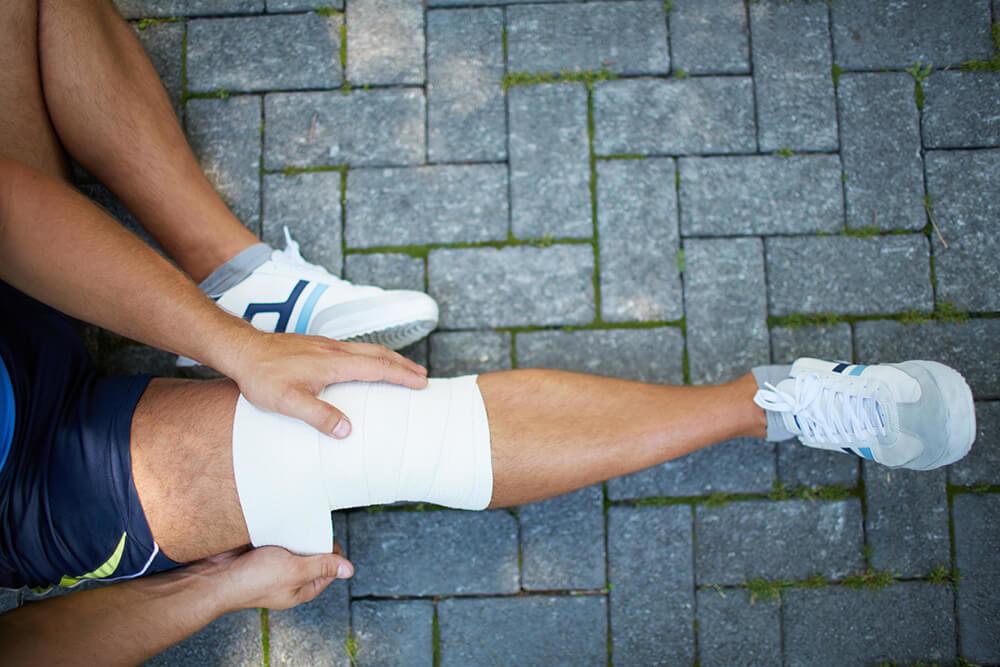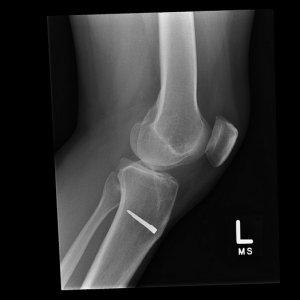How to Prevent Any Knee Injuries From Occurring

Knowing how to take care of your knees is absolutely imperative for runners and that goes for both beginners, and more seasoned athletes. If it´s been a while since you last took those running shoes out of your closet, a cruel mix of overweight, weak muscles and bad technique could send you right back to the couch for a couple of weeks more. But even if you have had your fair share of running mileage, it´s in your best interest to consider that many knee injuries appear with time. Even more so if your technique is inadequate or if you don´t take the necessary precautions from the start.
You should consider many factors come into play such as the running surface, running techniques and the fact that each of us is simply built up in a unique way. The next tip sounds so simple you might think that it goes without saying, but it´s important that you are aware of the signals your body is sending you. This definitely means that extra mile between amateurs and pros. You must also know how to interpret those signals, and understanding the main issues involved is key.

Flickr Creative Commons picture by Phil Roeder
How is the knee built up?
“The knee is one of the largest and most complex joints in the body. It joins the thigh- bone (femur) to the shin- bone (tibia). The smaller bone that runs alongside the tibia (fibula) and the kneecap (patella) are the other bones that make the knee joint. Tendons connect the knee bones to the leg muscles that move the knee joint. Ligaments join the knee bones and provide stability to the knee”.
But there are anatomical differences between the knee and the rest of the joints in your body. This causes it to take on more stress in every rotation, flexion or extension. As a matter of fact, most of the injuries that occur to runners and other athletes are located in the knee.

Muscle training
One of the main recommendations is to strengthen muscles that surround the knee in order to fortify articulation. Quadriceps, hamstrings and cuff links are crucial to endowing this part with strength. The main reason these muscles that surround the knees protect it when they are strong is that they absorb the direct impact of the collision to the ground. Regular squats, and one-legged squats (standing with one leg and the other leg crossed over it) are some home exercises that will do the trick. You´ll also find plenty of leg strengthening machines in every gym.
Good running shoes
Never underestimate the advantages of a good pair of shoes. You need a shoe that provides comfort, stability and cushion. You also need to take some time to learn about your foot´s specifics and your weight in order to choose the best type of shoe. The American Association of Medical Podiatry recommends using shoes that offer balance and cushion, according to your specific type of foot and gait, for preventing injuries.
It´s also important to maintain a healthy weight. Every extra pound means more shock in your knee and ankle joints. The latter is why constant training and keeping a healthy diet are also part of the equation. Also, don´t forget to warm up and stretch adequately. You need at least 10 minutes before and after training for a complete warm up and stretch. Rotation movements for lubricating the joints and other extension exercises are ideal for making muscles more flexible and impervious before injuries.
Don´t overdo it!
Every professional athlete out there agrees on the importance of rest as part of the training. If you´re only getting the hang of this, 2 to 3 days a week, plus 2 days of weightlifting will cut it. if you´re an intermediate you could try with 4 to 5 runs a week. Only an expert can run for 6 days, including the weightlifting sessions.
Regarding technique, the impact while running should never be received by your heels, for that is directly transported to your knee. Also, don´t run with your knees high. This will only make you impact the ground with your heels again. You should also never run with rigid legs, or not flexing your knees enough, for this will increase the impact in your knee. Your feet should be aligned towards the direction of the movement, avoid running with them twisted .

Keep in mind it´s a bad idea to abruptly increase the intensity of your training. It´s reasonable to increase the mileage, time and intensity of your trainings up to 10% a week. I know that 27-mile marathon seems tempting, but stick to your routine and pace, and don´t lose your knee in the process! This is also the part where you have to learn to listen to your body´s signals. Simply stop running if you´ve started to feel the pain, and make your comeback when it´s relieved.
Some pointers for when pain has begun are:
- Wrapping up the knee with tissue or tape and elevating it as much as possible.
- Putting ice around the knee and the tissues surrounding it many times in a day
- Some anti-inflammatories could be helpful for decreasing inflammation and pain
- Maintain athletic activity, only if it does not hurt your knee
As shocking as it may sound, it´s better if you don´t use kneecaps. The goal of a kneecap is to reinforce the affected area and help support the injured knee. Nevertheless, this is the natural function of your muscles, and when they are strong the kneecap is just superfluous. If you replace your strength training with kneecaps what you are doing is hindering your muscle capacity. This will lead to depending on a piece of neoprene, which will not help with your injury. Keep in mind that grass or sand surfaces are smoother for your knee than concrete or asphalt. So if running like the wind for many more years, without any pain, is in your plans, then it´s important that you practice these tips. Your knees will thank you!
Other related content:
- National Institute of Arthritis and Musculoskeletal and Skin Diseases. What Are Knee Problems? http://www.niams.nih.gov/health_info/knee_problems/knee_problems_ff.asp
- Sprains, Strains and Other Soft-Tissue Injuries http://orthoinfo.aaos.org/topic.cfm?topic=A00111
Sources:
[1] http://www.webmd.com/pain-management/knee-pain/picture-of-the-knee
[2] http://bmb.oxfordjournals.org/content/97/1/47.full
Latest Articles
 Is Running on a Treadmill Easier Than Running Outside?Runners have their own preferences, whether it is treadmill running, running outside on the road, or exploring trails. So...
Is Running on a Treadmill Easier Than Running Outside?Runners have their own preferences, whether it is treadmill running, running outside on the road, or exploring trails. So... Is It OK to Use Trail Running Shoes on the Road?While trail running shoes can be used on roads, especially in situations where a runner encounters mixed terrains or pref...
Is It OK to Use Trail Running Shoes on the Road?While trail running shoes can be used on roads, especially in situations where a runner encounters mixed terrains or pref... How to Fix Sore Quads After Running?Rest, ice, gentle stretching, and over-the-counter pain relievers can help soothe sore quads after running. Also, ensure ...
How to Fix Sore Quads After Running?Rest, ice, gentle stretching, and over-the-counter pain relievers can help soothe sore quads after running. Also, ensure ... 10 Fruits With The Most Electrolytes to Replace Sports DrinksThese fruits are high in electrolytes such as potassium, magnesium, and calcium, essential for hydration, muscle function...
10 Fruits With The Most Electrolytes to Replace Sports DrinksThese fruits are high in electrolytes such as potassium, magnesium, and calcium, essential for hydration, muscle function...

